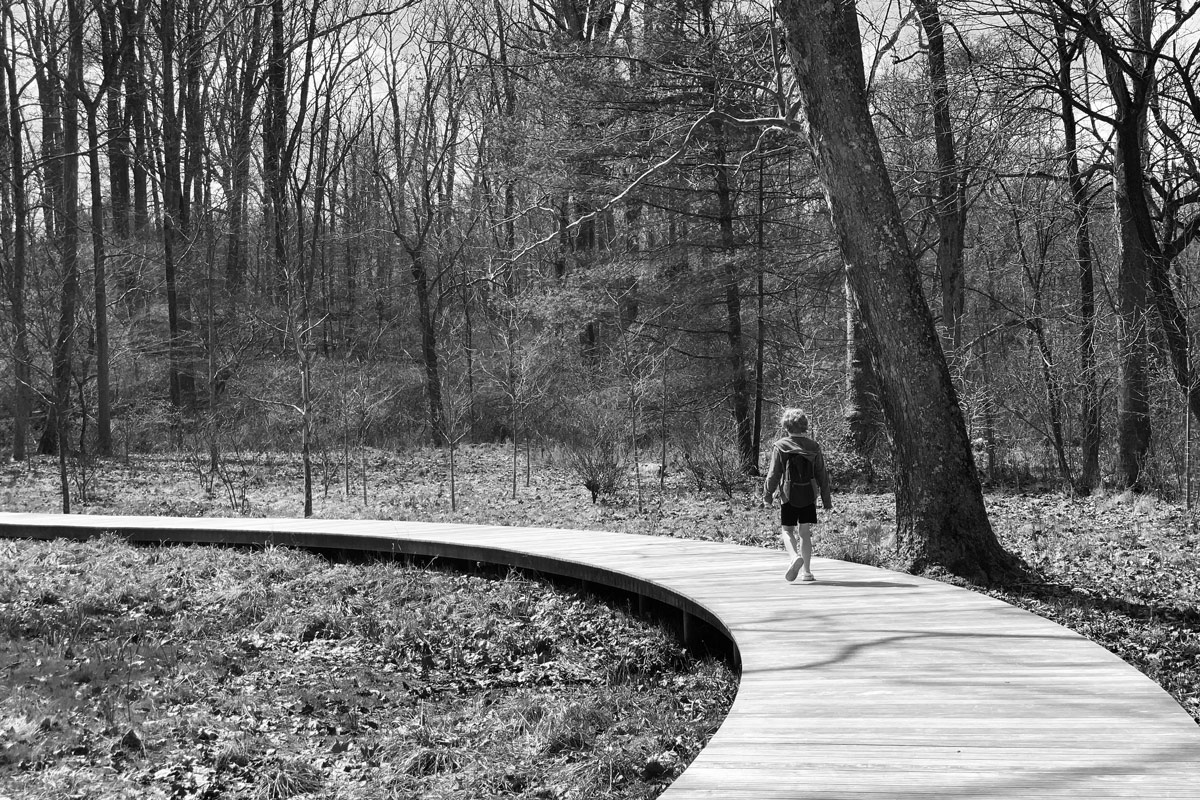Richard Serra at Glenstone
On Wednesday, March 27, I was starting the day before sunrise, enjoying some black coffee and skimming the news. Among the headlines, I saw that the artist Richard Serra, known for his massive abstract sculptures, had passed away the day before. The moment seemed to warrant some reflection. As I considered it further, I decided that I should take my son to see some of Serra's work.
There is one piece by Serra on display in the National Gallery of Art, which is not too far from Alexandria, Virginia, where my son and I currently spend much of our time. The most extensive collection in the area, however, is at a privately-owned museum in Potomac, Maryland, called Glenstone.
Glenstone was established in 2006 by American billionaire Mitchell Rales and his wife, Emily Wei Rales. The site covers approximately 300 acres in the countryside and is located about 45 minutes from urban Washington, DC. The museum's collection consists of approximately 1,300 works from the 1950s to the present. Part sculpture park, part museum complex, if you visit Glenstone, plan to walk a couple of miles through some forests and rolling hills. It's a beautiful place to spend a few hours outdoors.
Public access to Glenstone is free, but reservations are required in advance in order to visit. You can make reservations online at www.glenstone.org.
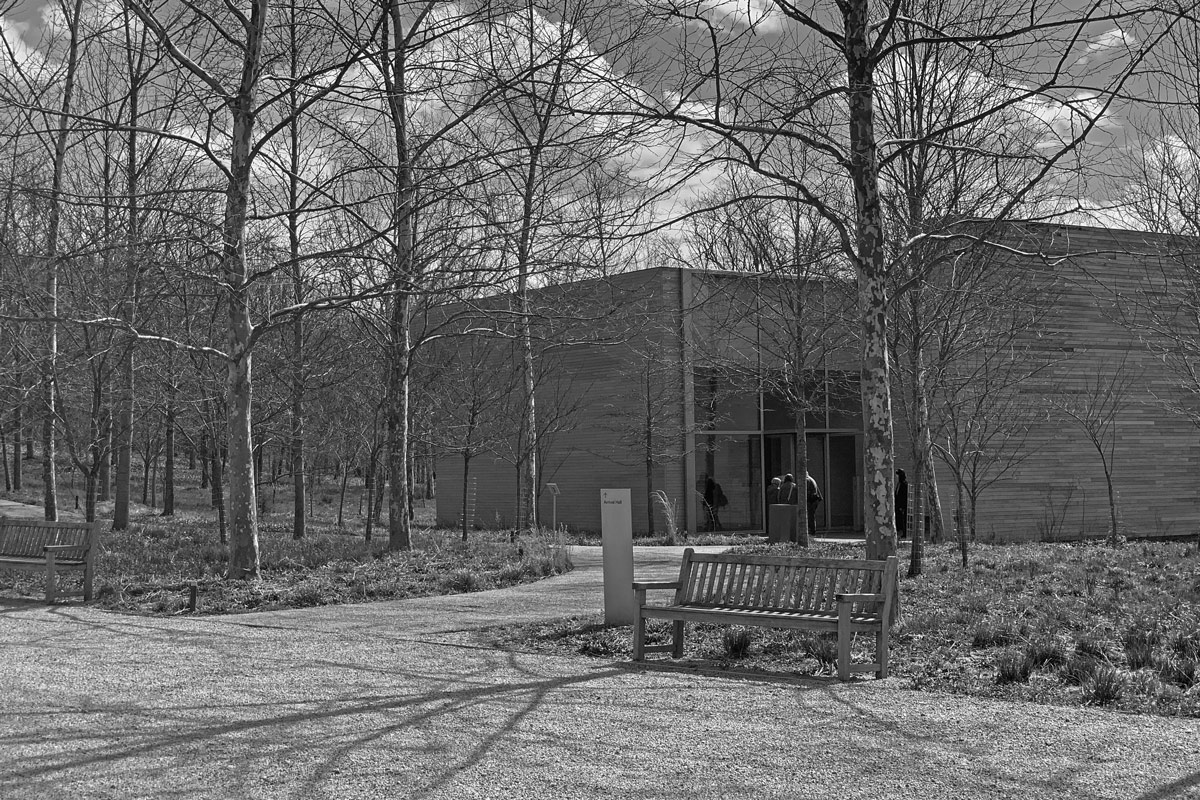
After checking in at the Arrival Hall and picking up a map, we followed the footpath into the grounds. We took the reverse route—proceeding in a clockwise direction on the loop around the grounds—and headed toward the 37-foot-tall Jeff Koons piece titled Split Rocker. From there, we continued along to the first Serra piece, a large ribbon-like wall titled Contour 290.
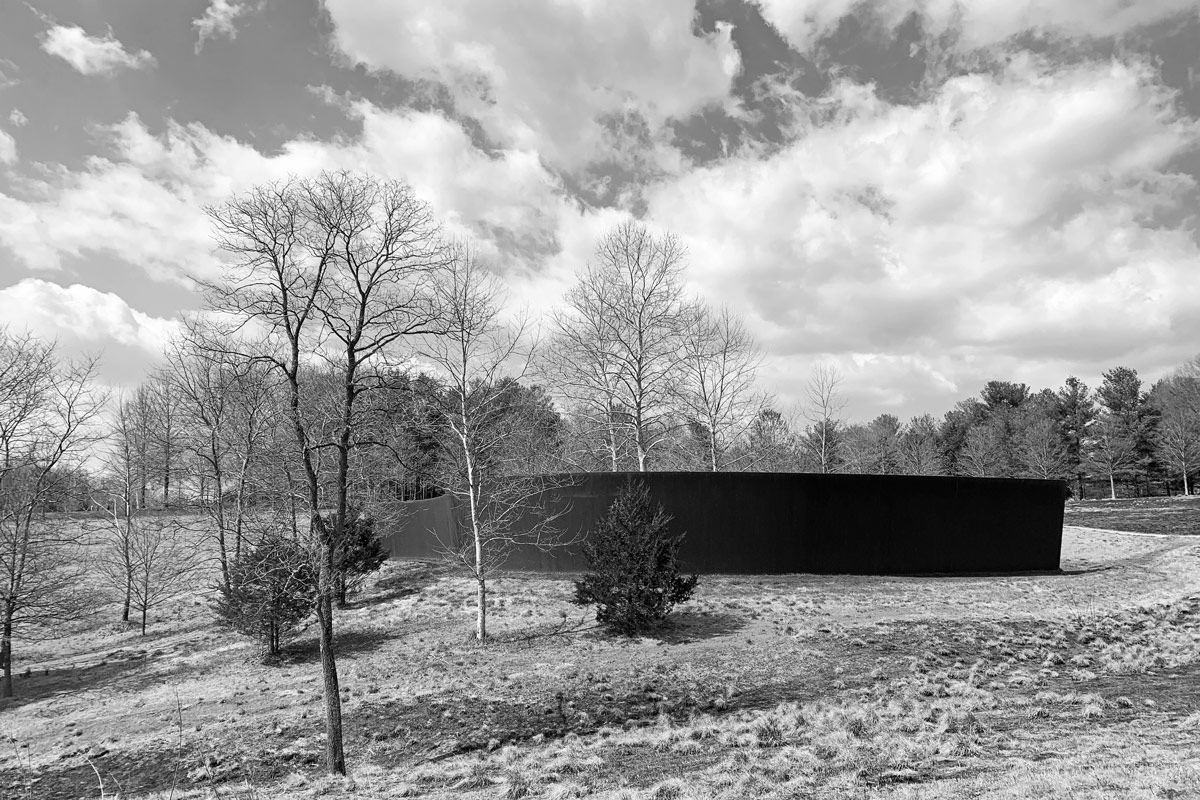
Continuing opposite the usual flow of traffic, we made our way to a boardwalk path that zig-zagged into a woodland marsh. My son, in a kind of youthful ability to see opportunities for play in whatever mundane scenario presented itself, took to jumping across ever wider gaps between sections. I commended him for having a sense to use boundaries as elements of play rather than something to simply stay within.
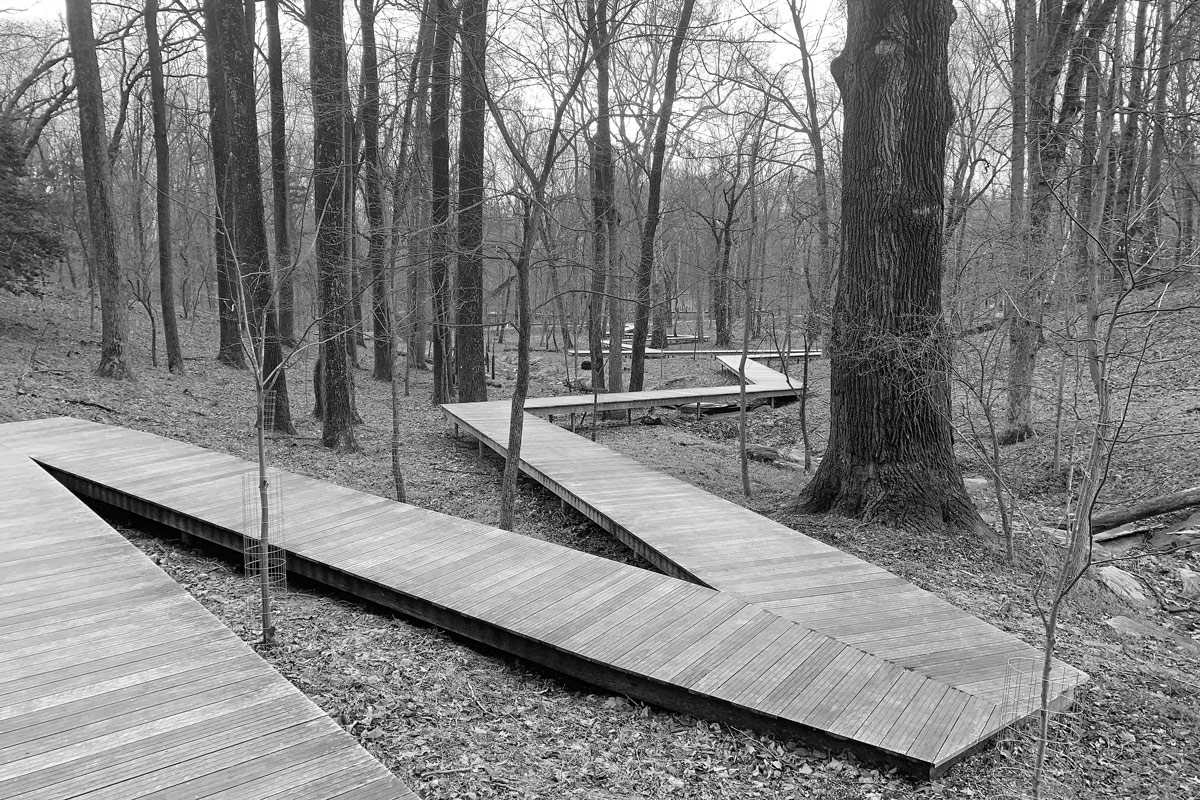
The boardwalk let out onto a stone path in a marshy woodland hollow down below. We followed the path along toward a second exhibit of Serra works, which was enclosed inside a building designed by the architect Thomas Phifer.
It's worth noting that the architecture at Glenstone is a lesser—but still remarkable—attraction to visiting the grounds. In addition to several buildings by Thomas Phifer and Partners, Glenstone also features work by Gwathmey Siegel & Associates. The trip to Glenstone would have been worth it alone to experience works by these designers and their teams up close.
My son and I followed the long arc of another boardwalk, which led to a heavy, monumental-feeling building by Thomas Phifer and which contains the Serra work Four Rounds: Equal Weight, Unequal Measure.
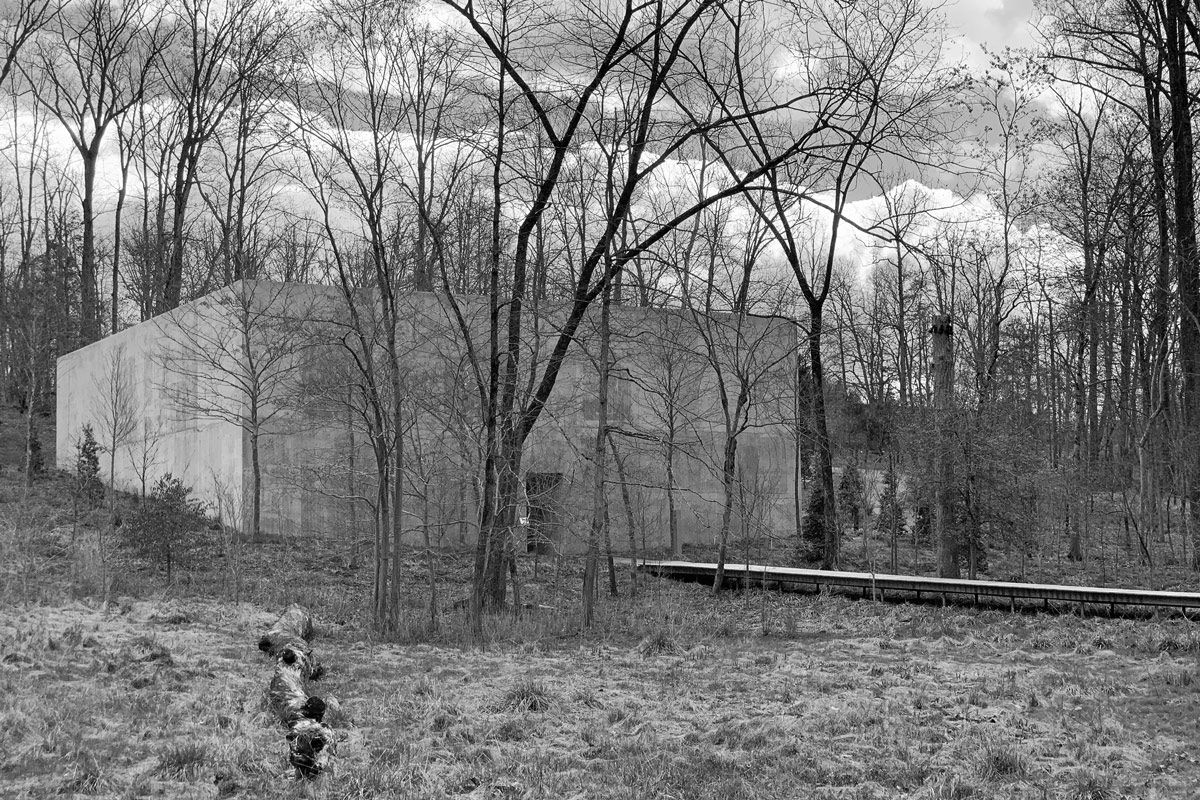
Years ago, toward the end of the course of my master's degree studies, I wrote a dissertation on the influence of architecture on human behavior—especially as it pertains to health and well being. I couldn't help but recall some of this experience as I stood inside the building enclosing the Serra exhibit. It created a sense of quiet solemnity in the air and there was an unmistakable weight to everything—not only from the obvious materiality of the Serra works themselves, but also from the massive concrete structure around them.
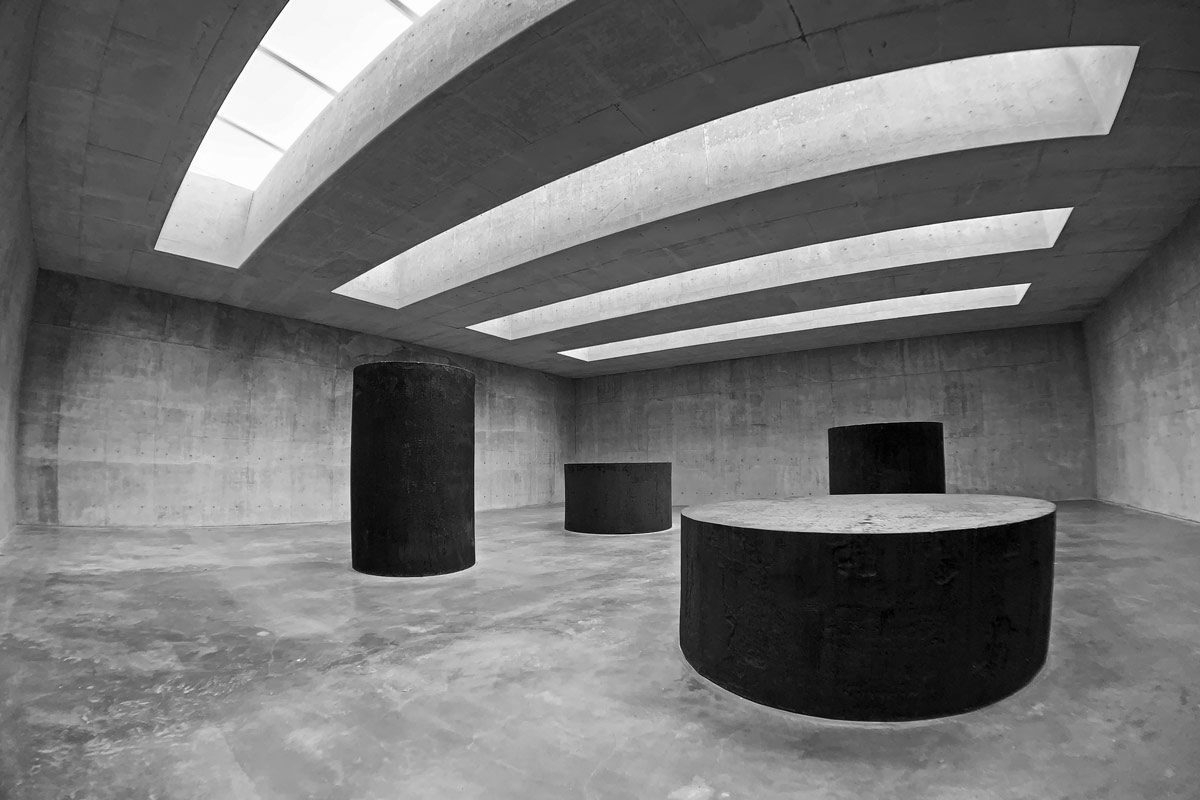
For me, the scene prompted questions on meaning in contemporary art. My son and I watched as people walked into the space. Many seemed overtaken by a sense of reverence. It was similar to how one might find themself suddenly speaking in hushed tones after walking into a gothic cathedral in Europe. There were factors in the space that created an expectation for behavior, and we watched with mild curiosity as visitors, one by one, complied upon entry.
But what was the purpose here? We were looking at what amounted to four giant pieces of slag exquisitely presented inside of a shrine built in a minimalist style. My son and I watched as people entered and stood in contemplation. It was an obvious behavior pattern. I'll admit that I have found myself doing this same thing many times, standing in front of works by Barnett Newman at the National Gallery, for example. What was the meaning of this thing that I was looking at? It always seemed like some difficult puzzle—one where if I looked at it long enough and thought hard enough, and maybe if it was my lucky day, the answer might emerge, like a revelation, and I would leave the encounter with the work a little more enlightened, having unlocked some great secret about the world that was too sublime to be communicated by mere words. After all, this was great art, vetted and approved by the most educated and sophisticated people, so it must hold some message and significance to justify its value.
Standing there with my son, though, the mysticism toward art seemed childish, too try-hard. Did these creators and their patrons know something about the nature of the world that I didn't? Maybe. But probably not. A defining feature of much of modern and contemporary art is not that it is sublime in holding its meaning, but that it's literal, and often that meaning is nothing. It's a kind of pleasant nihilism, one to not get too worked up about. There's no koan to solve. Instead, the answer is implicit and wide open in its existence: enjoy it if you like it; if not, fine; none of it matters anyway; that's life.
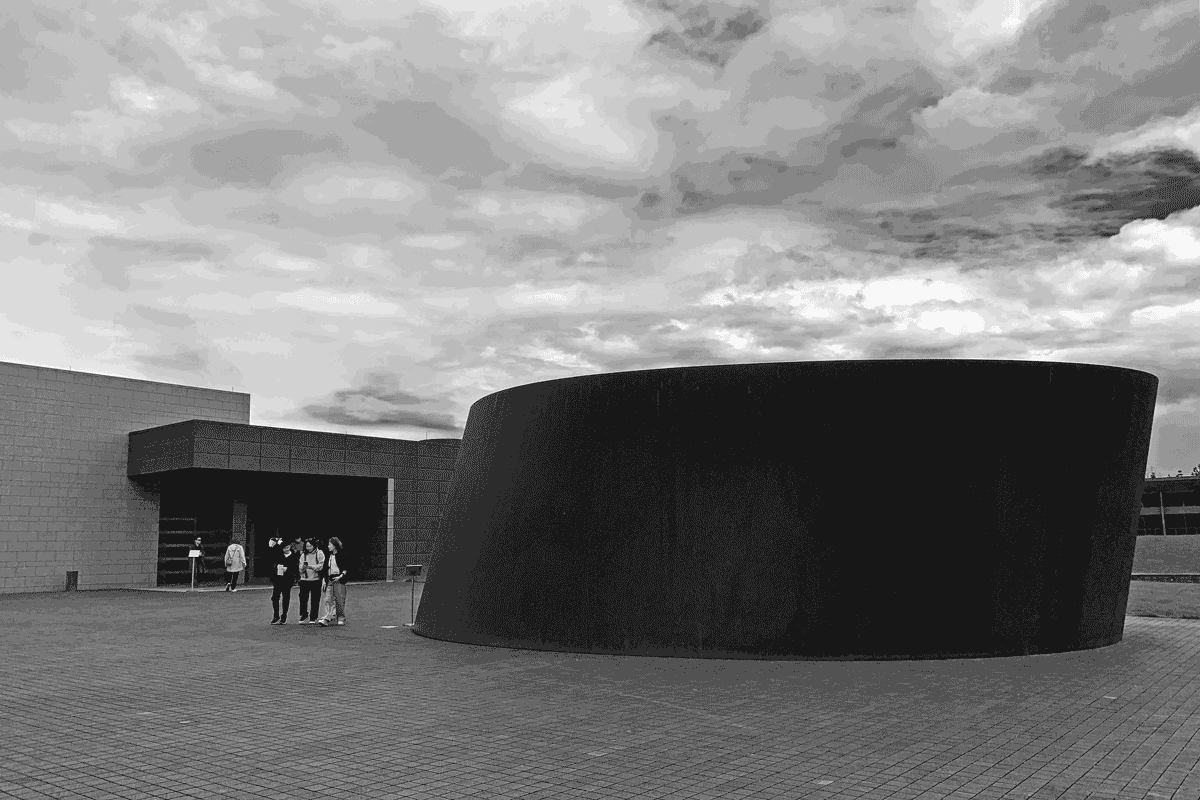
My son and I spent a good while at the Serra exhibit, discussing some, using the space as an opportunity to get started on a separate portrait-drawing exercise that I was planning to do with him at a later time, and then we continued on. Back in the woods on the stone path, we walked past three works by Andy Goldsworthy, which we also spent some time at. If you're visiting Glenstone, I'd say these are also worth seeing, both as works of contemporary art and as architecture.
Beyond the Goldsworthy works, the path ascended out of the hollow and the woods opened up on top of the hill to a small complex of buildings. This included The Gallery, an indoor museum designed by Gwathmey Siegel & Associates. Near the entrance to The Gallery is another of Serra's works, a massive coil of steel titled Sylvester. The spooled-up metal form elicits curiosity and invites one to explore. This invitation isn't without risk, though; there is only one way in and one way out, and there was no telling what was inside. My son stood looking at the entrance. "You can go in there," I said.
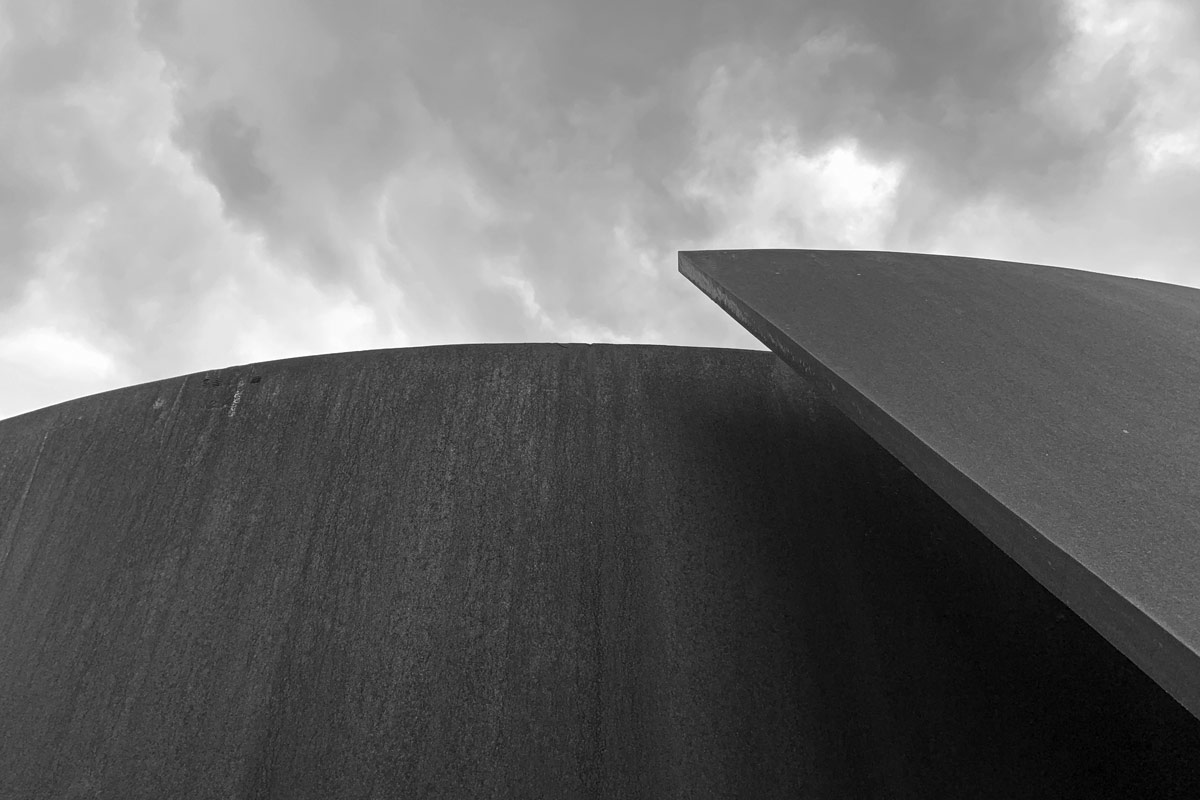
Admission to the museum grounds does not grant admission to The Gallery, but if you can get a gallery pass, I'd recommend it. Inside, among works by Yves Klein and Jasper Johns, was another Richard Serra piece—this one a large two-dimensional work, framed and hanging on a wall. It seemed to convey the same ideas as the steel pieces outside: scale, simplicity, silence, weight. There was a tectonic element to it. I enjoyed the variation on Serra's trademark themes in a less-renowned medium.
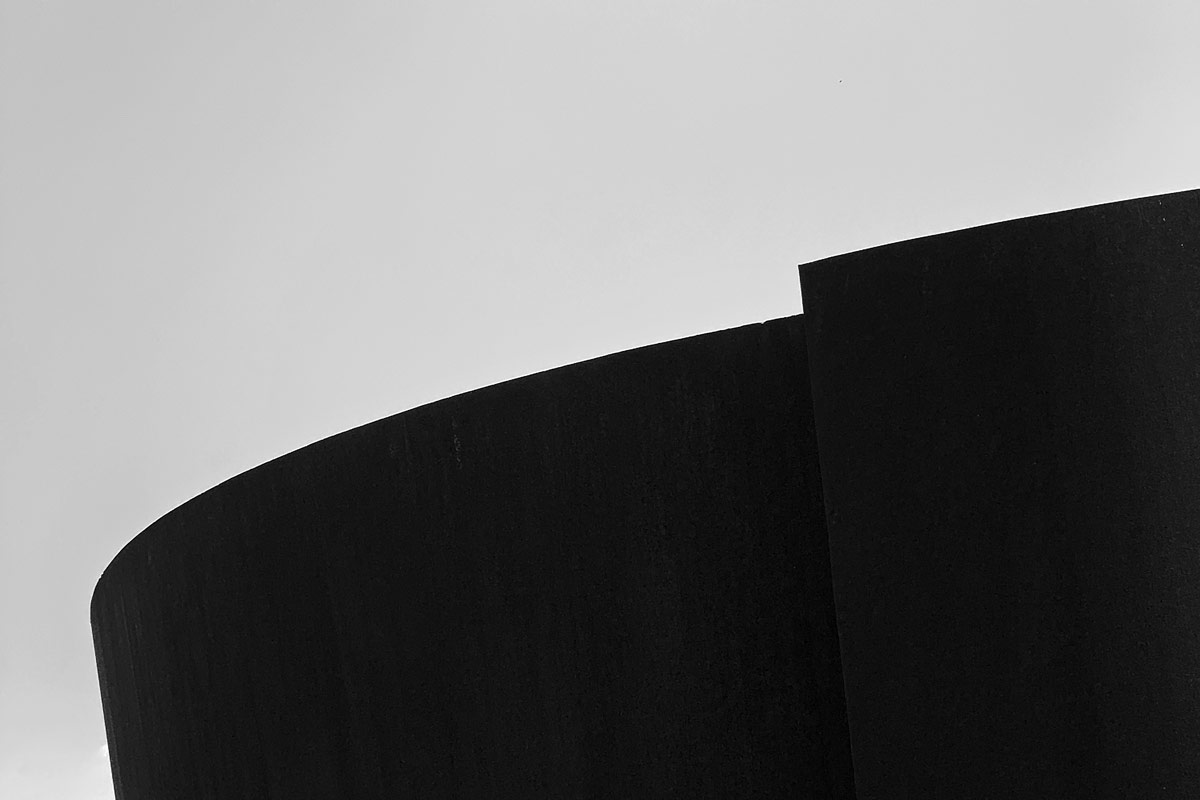
Since my son and I had taken the reverse route around the grounds, the return trip from The Gallery back to the start of our journey around the grounds was a pretty straightforward shot, much of it down a paved lane that gently curved through the hills. My son stopped for a moment along the way to look at a large sculpture by Tony Smith. The work was a sprawling mass of repeat forms. It displayed parallax as you moved past and it had a quality a little bit like a tesseract. We took a moment to view it and appreciate it from multiple angles.
As we continued further along, we could see the giant Richard Koons head poking out of the hillside, off in the distance. The thing seemed comical and ridiculous. Gloriously meaningless, I might say. We joked about its absurdity, then took in the rolling Maryland countryside as we walked. I appreciated the grids of trees as we got closer to the Arrival Hall. Order in nature is a beautiful thing.
If you made it this far, thanks for reading. I left Glenstone with questions and things bookmarked to return to for a closer look. I'll be back. Until next time.
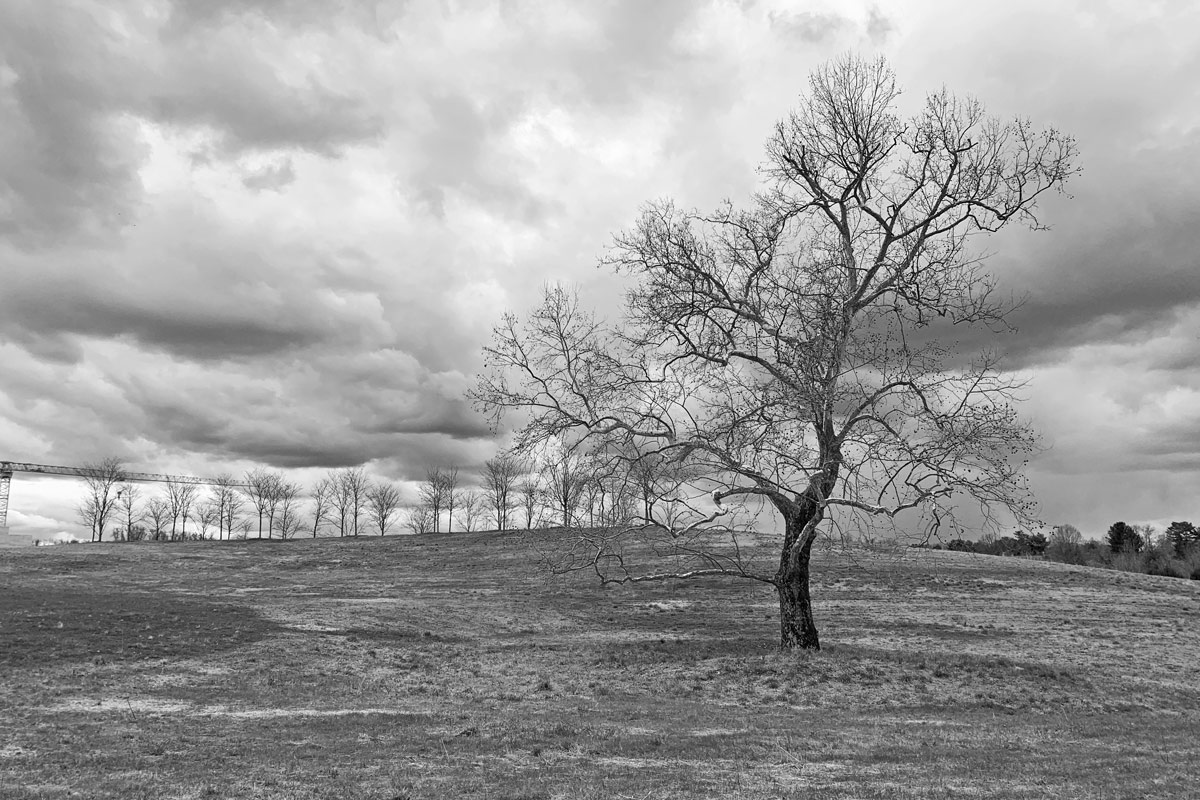
About The Photographs
All photos taken with an Apple iPhone XS. In some instances, a Moment CPL filter and Moment 170° fisheye lens were used. Color editing, image cropping and compression were done in Adobe Photoshop.

